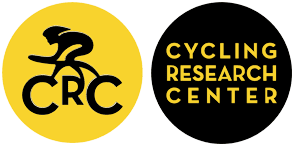Individualising training intensity to reduce inter-individual variability in training response in trained cyclists
Keywords:
training, individualisation, high-intensity, cycling, individual variability.Abstract
Background: Training to improve endurance performance commonly results in large inter-individual variability (IIV) in response (Bouchard et al. [1998]. Medicine and Science in Sports and Exercise, 30(2), 252–258; Mann et al. [2014]. Sports Medicine, 44, 1113–1124). A novel perspective to this issue centers on the differences in physiological response at set percentages of maximal performances; commonly used to prescribe training (Coyle et al. [1988]. Journal of Applied Physiology, 64(6), 2622–2630). By establishing individual profiles of performance using a Power Law (PL), training intensity could be prescribed on an individualised basis (García-Manso et al. [2012]. Journal of Theoretical Biology, 300, 324–329).
Purpose: This investigation sought to determine whether using a PL could reduce IIV in V̇O2max response to training compared to using a standardised method.
Methods: Two groups of male cyclists completed 12 high intensity training (HIIT) sessions over 4 weeks. Training intensity was prescribed using PL models in the individualised group (IG; n=5, V̇O2max = 57.50 ± 9.02 mL.kg.min-1) and set percentages of V̇O2max in the standardized group (SG; n=5, V̇O2max = 62.17 ± 4.45 mL.kg.min-1). A V̇O2max test and performance time trial were completed pre- and post-training. PL’s were established using maximal efforts of 12, 7, and 3 minutes (Galbraith et al. [2014]. Journal of Sports Physiology and Performance, 9(6), 931–935). Training sessions consisted of 3 sets of 10 repetitions of 30 seconds work and 30 seconds recovery, with 5 minutes active recovery between sets. Statistical analyses were conducted using IBM SPSS Statistics 22, with between- and within-group comparisons completed using independent and paired samples t-tests, respectively. Variability was analysed using log-transformed coefficients of variation and Bland-Altman plots.
Results: V̇O2max was shown to have significantly increased in IG from 57.50 ± 9.02 mL.kg.min-1 to 59.36 mL.kg.min-1 following 4 weeks of HIIT training prescribed using a PL (P < 0.05). V̇O2max did not significantly improve in SG (P > 0.05; Figure 1). Intra-class correlation coefficients (ICC) showed that variability in V̇O2max response in both IG and SG was low, but significantly stronger correlations were observed in IG (P < 0.001) than in SG (P < 0.05). Individual V̇O2max response profiles (Figure 2) indicate wider variation in response in SG, with two participants showing reduced V̇O2max, and a more consistent positive response in IG. Bland-Altman plots identify variance in V̇O2max response of + 4.39 ml.kg.min-1 to - 0.69 ml.kg.min-1 in IG and from + 8.86 ml.kg.min-1 to – 6.23 ml.kg.min-1 in SG (Figure 3).
Conclusion: The results of this study suggest that individualised HIIT training prescribed using a PL can reduce the IIV in V̇O2max response to training when compared to a standardised approach. This indicated that prescribing training using a PL model can result in consistent and predictable responses, useful for research, clinical, and applied purposes.
Downloads
Published
How to Cite
Issue
Section
Copyright (c) 2016 Journal of Science and Cycling

This work is licensed under a Creative Commons Attribution-NonCommercial 4.0 International License.
Authors contributing to Journal of Science and Cycling agree to publish their articles under a Creative Commons CC BY-NC-ND license, allowing third parties to copy and redistribute the material in any medium or format, and to remix, transform, and build upon the material, for any purpose, even commercially, under the condition that appropriate credit is given, that a link to the license is provided, and that you indicate if changes were made. You may do so in any reasonable manner, but not in any way that suggests the licensor endorses you or your use.
Authors retain copyright of their work, with first publication rights granted to Cycling Research Center.






